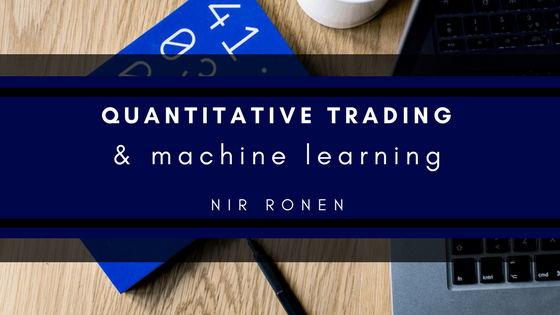The boom in technology over the last 10 years has changed much of how we look at data, use data, and calculate data. For those in the trading sector, these changes in data constructs have been incredibly beneficial – however, as always, it has come with a learning curve. When technology develops, company strategy must develop as well. And because data is such a large part of quantitative trading, the need to stay on top of evolving technology is great.
One of the biggest technical advancements in recent years has been machine learning. Rooted in algorithms and data modules, machine learning is an extension of artificial intelligence, and has the ability to quickly calculate algorithms to make predictions based on data and analysis in any number of data sets. Machine learning allows users to access automated algorithms that have the ability to adapt to changing trends, changing data, and changing algorithmic constructs. It’s beginning to be used in virtually every market; from social media analytics to online customer service interactions. With its powerful speed and unique abilities, machine learning quickly made its way into the trading profession.
Experts benefit greatly from this fast and adaptable technology, and here’s why: the human brain has limits that machine learning does not.
Machine learning, stemming from artificial intelligence, acts so quickly and accurately that the machines and computers are beginning to create new algorithms and find new strategies to act upon. Because of the adaptive nature of machine learning, there’s no need for a trading specialist to fix any algorithmic roadblocks – the technology can recognize a need for change and will adapt until that fix is resolved, in no time at all. This technology will essentially feed off of itself, since it doesn’t need to be preset with any specific qualifications. Machine learning will use data to create more and more algorithms to predict all types of market forecasts, lessening the burden of team members to create new algorithms for trading.
Quantitative trading leaders are leaders because of their ability to see the patterns within the algorithmic data they discover. There are several ways in which quantitative leaders qualify data that machine learning is currently enhancing. One of which comes within the practice of decision trees, often found in predictive modeling. Linear Regression and Classification are two ways in which machine learning is also used. These methods classify data into groups or a best line of fit instead of predicting any type of numerical data. Another way to use machine learning without a pre-set qualification is called clustering. Machine learning will establish subsets of data based upon any similarities it recognizes, in the hopes of creating new avenues for predictions and numerical data.
Imagine: decision trees created in seconds, historical data arranged in seconds, future price fluctuations predicted it seconds- it all amounts to quantitative trading specialists to be able to make their decisions faster and much more rooted in accuracy. Trading can seem like a gamble from the outside eye, but with all of this data being organized by concrete algorithms created by machine learning, the practice becomes much more concrete.
It’s important to keep in mind that machine learning is simply one tool used within quantitative trading, albeit an extremely beneficial and important tool. As the technology is still developing within the quant market, its specific uses are still developing as well. In the future, however, it won’t be surprising to see machine learning become one of the pillars of quantitative trading.

